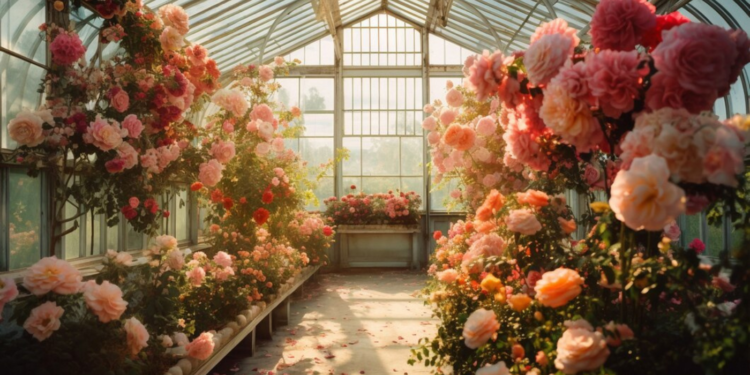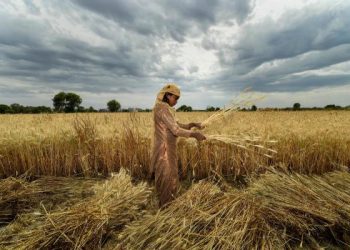The world of flowers, with their vibrant colors, captivating fragrances, and delicate beauty, has captivated human hearts for centuries. Floriculture, the cultivation and trade of flowering and ornamental plants, encompasses a fascinating and diverse industry that plays a significant role in our lives. Let’s delve into the enchanting realm of floriculture, exploring its rich history, current trends, and global impact.
Understanding Floriculture: A Journey into the World of Flowers
Floriculture’s roots can be traced back to ancient civilizations, where flowers were revered for their symbolic and aesthetic value. Egyptians adorned their tombs with elaborate floral arrangements, while Greeks and Romans incorporated flowers into their religious ceremonies and celebrations.
As the centuries progressed, floriculture techniques evolved, and new varieties of flowers were cultivated. The Dutch Golden Age in the 17th century witnessed a surge in tulip cultivation, leading to a period of unprecedented popularity and financial speculation surrounding these bulbs.
A Brief History of Floriculture: From Ancient Civilizations to Modern Cultivation

The practice of cultivating flowers for aesthetic purposes dates back to ancient civilizations. The ancient Egyptians, Greeks, and Romans all appreciated the beauty of flowers and incorporated them into their art, architecture, and religious ceremonies. The formal cultivation of flowers for ornamental purposes began to take shape during the Renaissance period in Europe, where wealthy patrons created grand gardens filled with diverse and exotic plant species.
Significance and Uses:
Floriculture holds immense significance in various cultural, social, and economic contexts:
Aesthetic Beauty:
The primary appeal of floriculture lies in the exquisite beauty of flowers. They enhance indoor and outdoor spaces with vibrant colours, unique shapes, and soothing fragrances, creating a visually appealing environment.
Expressing Emotions:
Flowers have a language of their own, allowing individuals to convey emotions and sentiments without words. Different flowers carry symbolic meanings – roses symbolize love, lilies signify purity, and sunflowers represent happiness.
Celebrations and Events:
Floriculture plays a vital role in celebrations and events, such as weddings, birthdays, anniversaries, and religious ceremonies. Floral arrangements and bouquets are integral elements of decor that enhance the ambiance of these occasions.
Funeral and Mourning:
Flowers are also used to express sympathy and offer condolences during times of mourning. They provide comfort and serve as a visual tribute to the deceased.
Economic Impact:
The floriculture industry contributes significantly to the global economy. Cut flowers and potted plants are traded internationally, generating substantial revenue and providing employment opportunities in various countries.
Therapeutic Value:
Studies have shown that exposure to flowers and nature can have a positive impact on mental well-being, reducing stress and promoting relaxation. This therapeutic aspect further underscores the significance of floriculture.
Captivating Facts:
- Global Trade: Floriculture is a truly global industry. Flowers are cultivated in various climates and regions, from tropical rainforests to temperate zones, and are traded internationally to meet the demands of different markets.
- Valentine’s Day: Valentine’s Day is one of the busiest periods for florists. The demand for roses, especially red ones, skyrockets as people express their love and affection through these classic symbols of romance.
- Dutch Dominance: The Netherlands is often referred to as the “flower shop of the world.” It is a global leader in flower production and exports, particularly tulips. The country’s Keukenhof Gardens is a world-famous showcase of diverse and stunning flower varieties.
- Orchid Obsession: Orchids, with their intricate and diverse shapes, are among the most sought-after flowers for both ornamental and scientific purposes. They have become symbols of luxury and refinement.
- Sustainable Practices: As environmental awareness grows, sustainable floriculture practices are gaining prominence. From organic cultivation methods to eco-friendly packaging, the industry is evolving to reduce its ecological footprint.
- Flower Festivals: Flower festivals around the world, such as the Rose Parade in the United States and the Chelsea Flower Show in the United Kingdom, attract thousands of visitors who marvel at breathtaking floral displays and innovative arrangements.
- Ikebana: The Japanese art of flower arrangement, known as Ikebana, emphasizes harmony, balance, and simplicity. It has a deep spiritual and cultural significance in Japan and around the world.
Challenges and Opportunities in Floriculture: Navigating the Path to Sustainable Growth

The floriculture industry, a vibrant and global sector dedicated to cultivating and trading flowers and ornamental plants, faces a myriad of challenges while embracing promising opportunities for sustainable growth. Understanding these hurdles and potential avenues for advancement is crucial for ensuring the industry’s continued success and its ability to meet the evolving needs of consumers and the environment.
Challenges Faced by the Floriculture Industry
Environmental Impact: Floriculture practices, such as excessive pesticide use and intensive cultivation, can strain natural resources and contribute to environmental degradation. Sustainable practices, such as integrated pest management and water conservation techniques, are essential to mitigate the industry’s environmental footprint.
Labor Shortages and Rising Labor Costs: The industry relies heavily on manual labor, facing challenges in attracting and retaining skilled workers. Rising labor costs can squeeze profit margins and impact the affordability of floral products.
Supply Chain Disruptions: The global pandemic and geopolitical tensions have disrupted supply chains, leading to shortages of flowers, delays in shipments, and increased transportation costs. Robust supply chain management and diversification of sourcing strategies are crucial to ensure product availability.
Changing Consumer Preferences: Consumer preferences are evolving, with a growing demand for locally sourced, sustainable, and ethically produced floral products. Adapting to these preferences requires innovation, transparency, and a focus on sustainability.
Opportunities for Sustainable Growth in Floriculture
Embracing Technology and Innovation: Technological advancements in areas such as precision agriculture, automated harvesting, and data analytics can optimize production efficiency, reduce labor costs, and improve crop quality.
Promoting Sustainable Practices: Adopting eco-friendly practices, such as organic pest control, water conservation techniques, and renewable energy sources, can minimize the industry’s environmental impact and enhance its sustainability credentials.
Diversifying Product Offerings: Expanding product offerings beyond traditional cut flowers to include potted plants, edible flowers, and garden supplies can attract a wider customer base and increase revenue streams.
Investing in Research and Development: Continuous research and development efforts can lead to the introduction of new flower varieties, improved cultivation techniques, and innovative product designs.
Strengthening Market Access: Expanding market access through e-commerce platforms, direct-to-consumer sales, and strategic partnerships can widen the industry’s reach and increase sales opportunities.
Educating Consumers: Educating consumers about the importance of sustainable floriculture practices, fair labor practices, and locally sourced products can foster informed purchasing decisions and enhance consumer trust.
Future Trends:
As society evolves and embraces sustainability, the floriculture industry is undergoing transformative changes:
Local and Seasonal:
There is a growing interest in locally grown and seasonal flowers, reducing the carbon footprint associated with long-distance transportation and fostering a connection to the local environment.
Organic and Eco-Friendly:
Consumers are increasingly seeking flowers produced using organic and eco-friendly practices that minimize the use of synthetic chemicals and promote soil health.
Floral Design Innovation:
Floral designers are pushing creative boundaries by experimenting with unconventional materials and avant-garde arrangements that challenge traditional norms.
Digital Engagement:
Technology is playing a role in connecting consumers with florists and flower growers through online platforms, allowing for customized orders and doorstep delivery.
Floriculture transcends mere horticulture; it is a dynamic blend of art, culture, and commerce. As flowers continue to captivate our senses and touch our hearts, the business of floriculture blooms with innovation, diversity, and a commitment to sustainable practices. From celebrations to solace, from cultural traditions to expressions of love, the world of flowers enriches our lives and reminds us of the delicate yet powerful beauty that nature bestows upon us. As we embrace the captivating world of floriculture, we are invited to explore the intricate tapestry of human emotions, aesthetics, and connections that are woven into every delicate petal and vibrant bloom.









